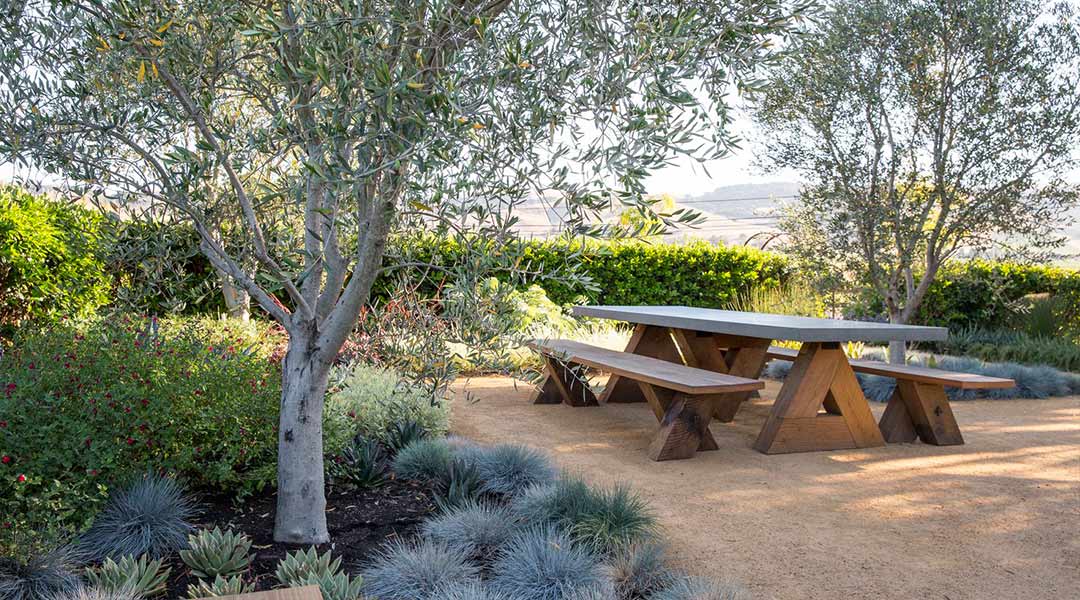
A Holistic Approach Sets the Trends in Landscape Architecture
The oft-overlooked element of landscaping in architecture provides the vital setting for the spaces we habit. The landscape contextualizes the architecture of homes and buildings, and creates the outlook from the interiors. The surrounding landscape can make or break the inhabitants’ daily experience of an architectural design; thus, this element deserves closer attention in the planning stages of a structure.
Fortunately, landscaping is more amenable to changes than most other architectural elements. If you want to make improvements to your immediate environment, a consultation with a landscape architect could provide comparable benefits to building renovations. The following trends can help you guide your investment towards the most enjoyable and healthy landscape design for your needs.

Photo courtesy of Insight Global Headquarters in Atlanta
Outdoor gathering spaces
In the wake of the pandemic, our outdoor gathering spaces have experienced a resurgence out of the necessity for social distancing. When the threat of the virus has been mitigated, this appreciation for outdoor spaces will remain as a reminder of our need for connection, and as a venue for our social lives.

Photo courtesy of The Republic in Austin
At the moment, many outdoor gathering spaces are simply an awkwardly forced extension of the interiors – a cordoned-off area on the sidewalk outside a restaurant, for example, or retractable tents outside houses. Intentionally designed outdoor spaces are a game-changer in the field of landscape architecture and can help us maximize the hard-won gains from the methods we’ve used to adapt to the pandemic. Landscaping features that provide plenty of space, shade, greenery, and comfortable seating will encourage outdoor gatherings.

Photo courtesy of Homestead Design Collective
Outdoor living
On a closely related note, the extension of the home into the outdoors is a refreshing trend that provides a bracing challenge for landscape architects and their clients. Maximizing the flow between the indoors and the outdoors is not always a straightforward task, and requires creative thinking to ensure that the outdoor spaces will remain comfortable and sheltered from the elements while enjoying the fresh air and natural light. Features such as durable outdoor furniture, awnings extending from the roof, and modular structures can make this possible, along with glass doors and complementary color themes to seamlessly blend the indoor and outdoor areas.

Photo courtesy of The Owner Builder Network
Smart technology in landscape architecture
With the goal of integrating structures into their environments, and making our lives more comfortable and convenient, landscape architecture can draw on smart technology. Smart appliances, smart buildings, and gadgets that are accessible to everyone are the components of a smart environment. Putting these together enables the structures around us to adapt to our needs – for example, automatically adjusting the temperature in a building, or switching off the lights after inhabitants leave the room.
Smart technology can also use sensors to control the home’s security system and maintenance processes, such as garden sprinkler systems. Smart technology makes efficient use of our available resources. And the best part is that this technology has become much more affordable in recent years, with many affordable smart home devices now on the market.

Green spaces
Environmental concerns about global warming and air quality can be addressed by increased foliage outside the home. In the Philippines, the alternating periods of abundant sunshine and rainfall of the tropical weather encourage a wide variety of low-maintenance, drought-tolerant plants that provide year-round greenery. Today’s top landscape architects are mindful of using indigenous plants, which readily mingle with the ecology of the area. Techniques such as mounding, curving plant beds, walls, and paths can help you make the most of a limited space. A landscape architect can provide timeless value for your home if they are meticulous about the implementation of design and mindful of the lay of the land.


